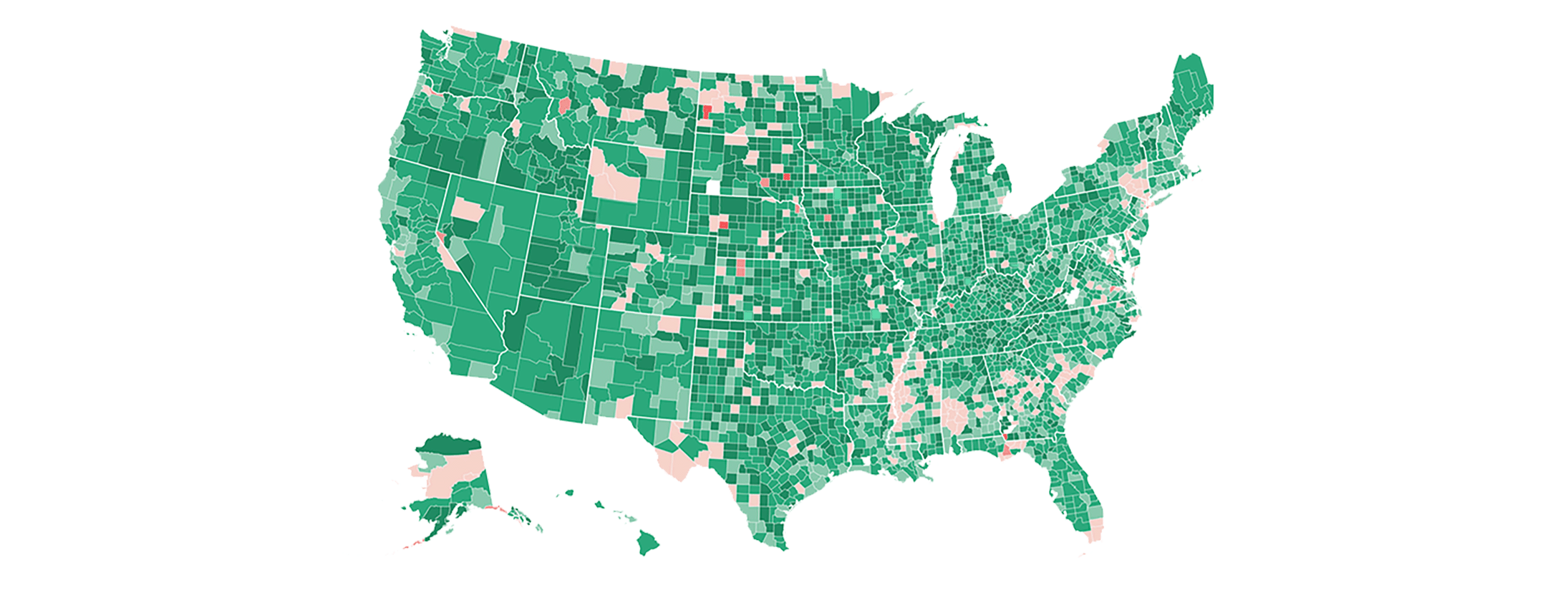Interactive Map: eCommerce Fraud & Shopping Trends by US County

We dug into our data, as we often do, looking to find insights into fraud patterns and shopping trends, and created this interactive map. It's based on data from more than 20 million online purchases that were shipped to US addresses in 2017
Data is essential to every aspect of managing an online business, and eCommerce fraud prevention is no exception. Without in-depth analysis, it’s of very little value. We dug into our data, as we often do, looking to find insights into fraud patterns and shopping trends, and created the following interactive map. It’s based on data from more than 20 million online purchases that were shipped to a US address in 2017. The data is broken down by county and color coded according to risk of fraud.
Hovering over each county reveals the share of mobile purchases and international orders (by IP and/or credit card BIN). We encourage you to explore the map and dive into the data. You can enlarge your screen and zoom in to access smaller counties.
Risk and The City
Our first hypothesis was that crowded cities are more likely to host fraudsters than sleepy, remote towns. Fraudsters need a place to hide, a task made simpler in an area with an abundance of eCommerce activity, IP and shipping addresses. Our analysis confirmed a statistically significant correlation between population and rates of eCommerce fraud. Rural counties with small populations tend to have little or no fraud, while dense, urban counties typically have higher rates of fraud.
But population size shouldn’t be weighed heavily when trying to predict fraud rates, as there are many contributing factors. Even in some of the most populous US counties – Los Angeles, Cook (Chicago), Harris (Houston), Maricopa (Phoenix) and San Diego – over 98% of online purchases were legitimate. Meanwhile, the most fraud-prone US counties in 2017 varied greatly in terms of population. They included highly populated areas like Kings County (aka Brooklyn), but also counties with a population much lower than the 100,000 average, like Douglas County, Nevada, and Kentucky’s McLean County.
When fraudsters base their operations in small, less populated counties, their fraud attempts skew the county’s overall fraud rates. Liberty County, Florida (population 8,365) is a prime example. It topped the list with the highest rate of fraud in 2017, after an international mobile fraud ring used a local shipping address as the destination for goods they planned to steal. With a population of 113 and a fraud rate 4 times the national median, Loving County, Texas is another testament to the fact that rurality isn’t a guarantee for safety. (Learn here how to optimize mobile commerce by tailoring your fraud review.)
One factor that contributes to higher rates of fraud in certain counties is the presence of reshippers. We noticed higher-than-average fraud rates in several counties in Oregon, Delaware and Florida – all with a relatively high number of reshippers. And while the abuse of reshippers by fraudsters is well documented, it’s important to remember there are many legitimate reasons to use reshippers.
Spending Power vs. Average Cart Value
We expected to see higher spend per online order in affluent counties. It made sense that consumers in areas with a high median household income would, on average, spend more per eCommerce purchase. To our surprise, we found no such correlation.
In fact, we found that higher-than-average purchase values are prevalent in rural counties, probably because eCommerce is a convenient alternative to in-store shopping when brick & mortar locations are few and far between. Lincoln and Cumberland Counties in Maine and Albany County in Wyoming had the highest average online purchase value in 2017. Combined, they had an average cart value seven times higher than the average US county ($59).
Cross-border eCommerce
Next, we set off to see which counties had a higher share of international eCommerce. In the context of this map, this includes orders placed from a device with a foreign IP address or made with an international credit card, and then shipped to a US address. We expected to find the highest rate of international activity in counties with many reshippers and in cities frequented by global tourists.
Indeed, several counties in Oregon and Delaware reflected the presence of reshippers. But more interesting was the fact that many of the counties with the highest rates of international eCommerce border Canada. This finding can be easily explained – 90 percent of Canadians live within 100 miles of the US border. Rather than pay for international shipping (and taxes) – they opt to ship their orders to a nearby US address and enjoy free shipping and returns. Over 50% of orders shipped to Pembina County, North Dakota, for example, were cross-border purchases – a rate 96 times higher than the average US county.
We hope you find this interactive map interesting and useful. If you liked this map you may want to check out Riskified’s interactive world map, which offers an overview of approval rates by country, as well industry-specific shopping patterns across the globe.
If you have any questions or comments, feel free to reach out to us.


